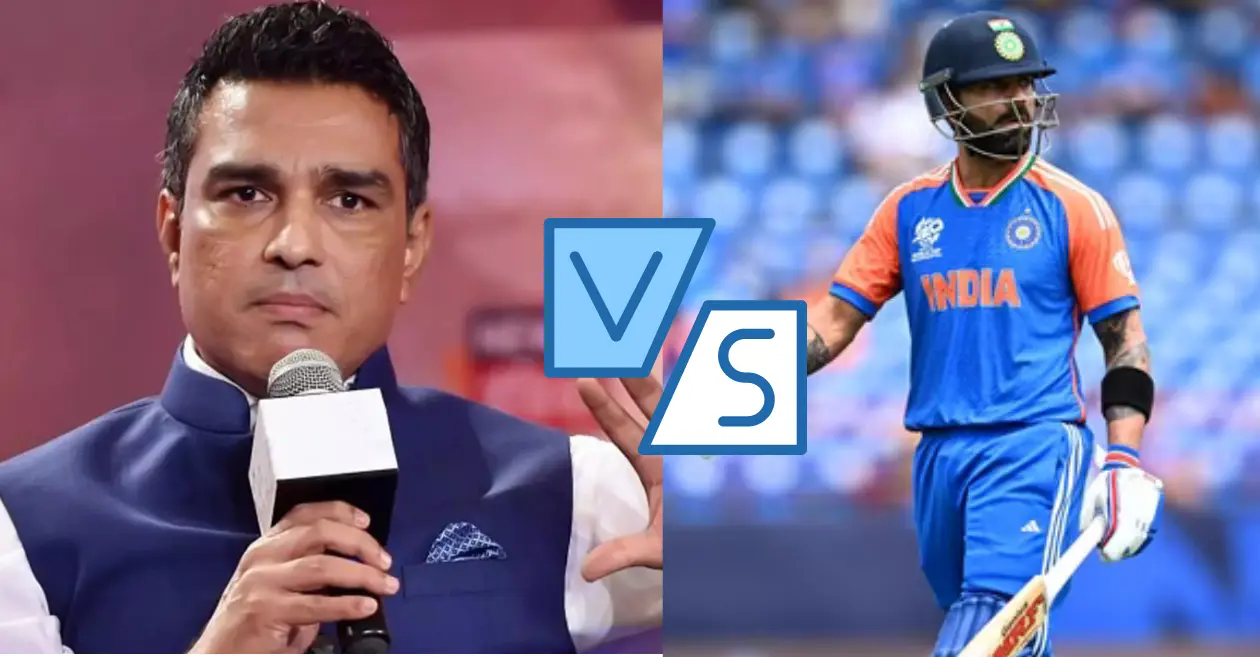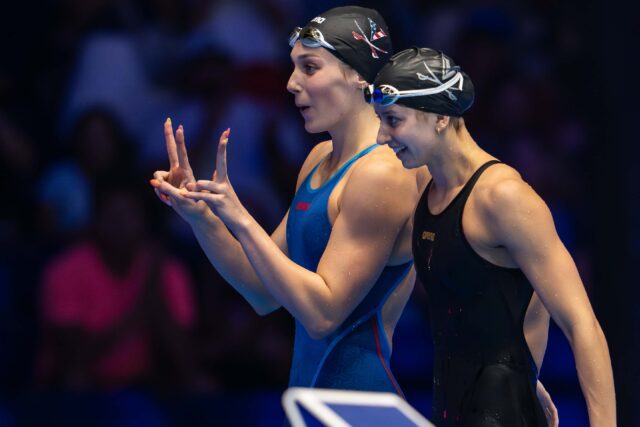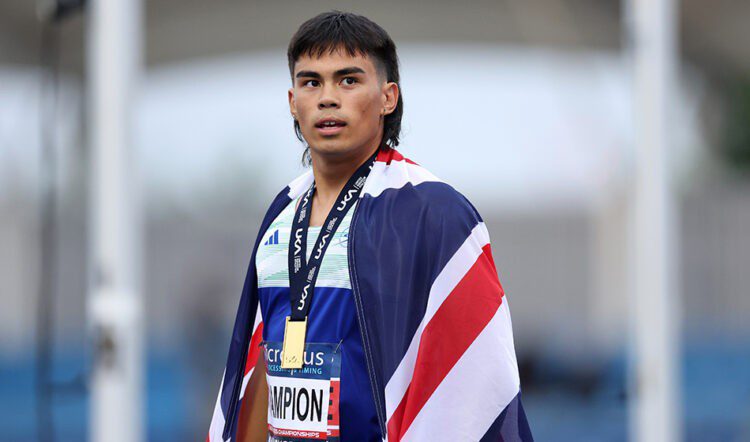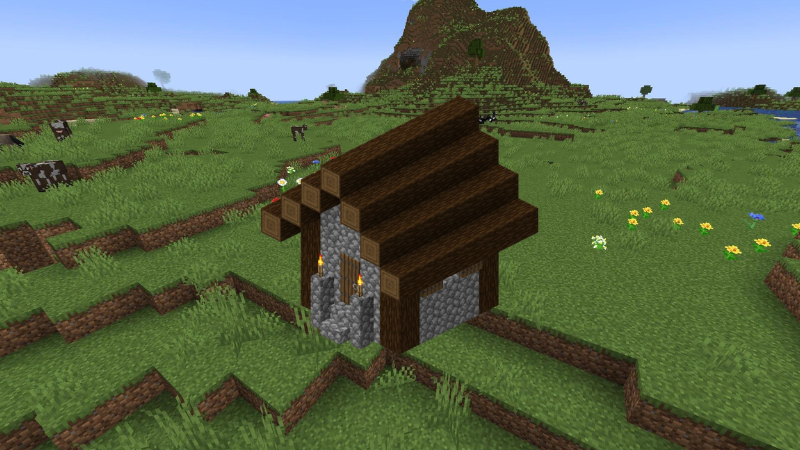
It depends on which of two competing philosophies you favor
New York Giants general manager Joe Schoen has now had most of three off-seasons to develop the Giants’ roster. In a little more than two months, we will begin to see how good or poor a job he has done. Professional analysts and fans are happy to pass judgment now, before even a regular-season snap has occurred. This is ridiculous. At this time in 2022, the Giants’ roster looked barely better than the one that had finished the 2021 season surrendering on second and third down, because Schoen had inherited a $40M hole to dig out of. That team reached the Divisional Round of the playoffs. A year later, the Giants had added major pieces in free agency, trade, and the draft, to build on the 2022 progress, yet that team laid an egg.
Is this year’s team better than last year’s? I have no idea, and neither do you. So we can’t yet say whether Schoen has significantly improved the roster. One thing that is fair to do now, though, is to look at the new contracts Schoen has given out, and ask: How often has he overpaid, gotten a bargain, or paid just the right amount to acquire or retain a player? Is Schoen a good steward of the Giants’ finances? This is admittedly a subjective exercise, and the season yet to be played can change impressions, but at least we have past performance and the market to provide context – the same information Schoen had when he made the deals.
Whether the players he has obtained/retained are the right ones to lead the Giants out of the nether regions of the NFL is a separate question that can only be addressed after the season has been played. It’s not completely unrelated, though, since the more you pay one player, the less you have to get or pay others…depending on your overall spending philosophy, as discussed below. The question then is whether the total of all contract signings favors the team, players, or is close to neutral.
Overall state of the Giants’ finances
The Giants currently have $11.465M in cap space, per Over The Cap, 10th-lowest among NFL teams, with 92 players under contract:
With potential weaknesses at cornerback and the interior defensive line, it’s disappointing that the Giants have that little money available to add a potential difference-making player. The reason they have that little cap space is that they have $21.546M of “dead” money on the books, i.e., money that counts against the cap for players no longer with the team.
/cdn.vox-cdn.com/uploads/chorus_asset/file/25506453/Screenshot_2024_06_25_at_9.09.46_PM.png)
Courtesy of Over The Cap
That sounds bad. It really isn’t, though. The Giants actually have the 12th-least dead money among NFL teams, as the chart above shows. Seven teams have more than $50M in dead money (Broncos, Bills, Vikings, Buccaneers, Chargers, Jets, Eagles).
Another aspect of team financial health is the amount of money in “void” years, i.e., money owed to current players in years after the end of their present contract. It’s like paying for a restaurant meal with a credit card – you pay for it long after the meal is eaten. Here is the amount of void money for each NFL team:
How much cap space does each NFL team have stored in void years? (Listed next to each team logo is their Super Bowl odds) pic.twitter.com/EImP5aCruV
— Cooper Davis (@CDFBAnalysis) March 28, 2024
The Giants have the fifth-lowest amount of money in void years. The Eagles, Browns, and Saints are the perennial NFL leaders in void year money. They are joined these days by the Jets, who have a sense of urgency to win now with their aging, ayahuasca-fortified quarterback.
Is little money in void years a good or a bad thing? It depends on your perspective. The overall picture of the Giants is that they are a financially conservative team. They keep their financial house in order. No “I will gladly pay you Tuesday for a Super Bowl today” for them. Whether that is Schoen’s philosophy or a dictate from John Mara and Steve Tisch, we don’t know…because with void years it is possible to spend more cash in any given year than the amount of the salary cap, but only if the owner(s) have the resources and OK it. Teams routinely pay players signing bonuses in which the player gets the full amount of the bonus upfront but the cap hit is spread over the life of the contract. Void years are a way to spread costs out even further than the number of years the player is under contract, allowing a team to acquire a talented free agent at little upfront cost.
The basic idea is that with the salary cap increasing (almost) every year, a team can pay players now with “cheaper” (= smaller percentage of the cap) future dollars. Which approach is better for a given team? Arguably it has worked for the Eagles. They haven’t won a Super Bowl in the Jalen Hurts era but they were only a play or two away the season before last and are always a contender. The fact that Hurts has a $97.6M cap hit in 2029, or that a Carson Wentz-like injury and career downturn this season would leave the Eagles with $107M in dead money in 2025 if they were to trade him, is of little concern to Howie Roseman. The Browns and Saints are a different story – the extra spending hasn’t gotten them anywhere near a ring. Few consider them contenders this season. The Jets? We’ll see.
Would it make sense for the Giants to go the cash-over-cap/void year route (if Mara and Tisch gave Schoen the OK) to acquire premiere players? If you think the Giants are not yet poised for a Super Bowl run, maybe not. This may explain why Schoen has not signed a veteran corner like Stephon Gilmore (if Gilmore would even consider the Giants). He’d cost the Giants all their remaining cap space, but with void years that need not be the case. If the Saints’ Mickey Loomis were the Giants’ GM, he’d probably have tried to sign Gilmore already. Whether Joe Schoen has tried, we don’t know.
Specific contracts
We’ll go in descending order of 2024 cap hit and look at the most consequential current Giants contracts:
Daniel Jones
Schoen has taken considerable heat for his handling of Jones’ contract situation. Few if any thought Jones would or should get $40M per year. In reality, though, Schoen was dealt an almost impossible hand. He and Brian Daboll came in after Jones’ 2021 season, half of it lost to injury. Having never seen him in Daboll’s offense he had to decide on Jones’ fifth-year (2023) option. In retrospect, he should have picked up the option, but there was no way to anticipate Jones’ and the team’s 2022 success given his body of work up to that point.
Then in 2023, many people thought Schoen should have franchise-tagged Jones rather than signing him for four years and $160M. In hindsight, that looks like it would have been the right move. Tagging Jones, though, would not only have made the Saquon Barkley negotiation more difficult, it would have taken up $32M on the 2023 cap, rather than the $15.4M it cost under Jones’ new contract (because of a prorated signing bonus that cannot be done with a tag). Letting Jones walk after the 2022 playoff run was not a realistic option.
What would Schoen not have been able to do with Jones on the tag? Sign Bobby Okereke? We’ll never know. One option might have been to restructure other contracts to create more money in void years…if any such contracts were even available to do so. Darren Waller had not been acquired yet. Andrew Thomas and Dexter Lawrence were still on their rookie contracts. Only a year earlier Schoen had been forced to release James Bradberry because he’d done everything else possible to get under the cap.
Jones’ contract is now 14th in size among quarterbacks (actually a three-way tie for 12th in average annual value, but with smaller guarantees than Matthew Stafford and Dak Prescott have):
/cdn.vox-cdn.com/uploads/chorus_asset/file/25507045/Screenshot_2024_06_26_at_10.48.20_AM.png)
Courtesy of Over The Cap
He’d be 15th were it not for Aaron Rodgers voluntarily taking a cut in pay last year. Expect Prescott, Jordan Love, and Tua Tagovailoa to seek contracts in the neighborhood of the $55M Trevor Lawrence just got or even more, although it is not clear that any of them will get that much. Anything above $40M per year will push Jones’ contract down to 17th, which would be eminently fair if he performs anything like he did in 2022. If he doesn’t, the Giants can release him with $22.2M in dead money. Yes, he’s counting $47.9M against the cap this year, but that was probably by design: ($15.4M + $47.9M)/2 = $31.65M. In other words, the two guaranteed years of Jones’ contract will have had almost the same collective impact on the cap as tagging him for two years would have.
If Jones plays just well enough in 2024 to warrant keeping him for 2025 while they somehow acquire a successor, they can release him after three years at a total cost of $112.5M for three years, i.e., it will have wound up being a three-year contract at an average annual value of $37.5M…which is about what most observers expected would happen when negotiations were coming down to the wire. It won’t be a $160M, $40M per year deal unless Jones plays well enough to last all four years, in which case they’ll be happy to have given him that much given the explosion in QB salaries.
Contrary to public opinion, it’s not a bad contract given the circumstances Schoen faced at the time. Most notable is that unlike the QBs paid more than him, Jones’ contract contains no void years. Schoen decided to make a short-term bet, accept short-term pain if it didn’t work out, and be done with the pain quickly in that case. It will only be seen in retrospect as bad if Jones has a poor 2024 or suffers another season-ending injury. That’s entirely possible given his history, but a return to his 2022 form is also possible. The bill will be completely paid by 2025 if Jones is gone next year.
Andrew Thomas
Here are the top 10 left tackle contracts in the NFL at the moment:
/cdn.vox-cdn.com/uploads/chorus_asset/file/25506957/Screenshot_2024_06_26_at_10.06.05_AM.png)
Courtesy of Over The Cap
Andrew Thomas is now the second-highest paid left tackle in the NFL after signing a five-year, $117.5M contract extension last year. In guaranteed money, it is the highest in the league. Is Thomas the best or second-best left tackle in the league? It’s hard to say. 2023 was a difficult year, with Thomas pulling a hamstring on the first drive of the first game and missing seven games after that. When he returned he was not quite the player he had been, grading “only” 80.2 in pass blocking by Pro Football Focus, 13th-best among offensive tackles, with a pedestrian 64.1 run block grade.
The 2022 season, when Thomas was healthy, was a different story:
/cdn.vox-cdn.com/uploads/chorus_asset/file/25506982/Screenshot_2024_06_26_at_10.16.40_AM.png)
Courtesy of Pro Football Focus
Thomas was third overall in blocking in the NFL and barely missed being first, with elite grades in both run and pass blocking. The only knock on Thomas is his injury history. With veteran Jermaine Eluemunor next to him (if the current plan holds), a healthy Thomas could be the best left tackle in the NFL.
I don’t believe I have seen a single negative comment among analysts or fans about the size of this contract. Thomas is still only 25, two or more years younger than all the other top left tackles.
Brian Burns
On the upcoming Hard Knocks Offseason, Schoen is filmed telling Daboll and defensive coordinator Shane Bowen that it would take two second-round picks and and $28-29M per year to trade for and sign Brian Burns:
Taking you behind the scenes of the offseason for the first time ever#HardKnocks Offseason with the New York Giants premieres July 2 on Max. #Giants100 pic.twitter.com/XIwQNT6KYv
— New York Giants (@Giants) June 25, 2024
A year earlier, the Carolina Panthers had turned down an offer of two first-round draft picks from the Rams for Burns and had interest in him from five other contending teams at the trade deadline.
Given that, the price that Schoen agreed to – a second-round pick, a 2025 fifth-round pick, and a swap of 2024 fifth-round picks – was a bargain and the contract that he signed Burns to ($28.2M per year for five years) was right in line with what he had anticipated. Burns’ contract now ranks third in total and average annual value among edge defenders:
/cdn.vox-cdn.com/uploads/chorus_asset/file/25507055/Screenshot_2024_06_26_at_10.55.26_AM.png)
Courtesy of Over The Cap
The fact that Burns was in such high demand suggests that he is widely respected around the league. Does his performance match the hype?
Burns finished only tied for 20th in PFF pass rush grade among edge defenders who played the majority of snaps last season:
/cdn.vox-cdn.com/uploads/chorus_asset/file/25507062/Screenshot_2024_06_26_at_11.01.06_AM.png)
Courtesy of Pro Football Focus
His yearly grades suggest that last season was typical of his NFL career to date:
/cdn.vox-cdn.com/uploads/chorus_asset/file/25507072/Screenshot_2024_06_26_at_11.06.47_AM.png)
Courtesy of Pro Football Focus
Burns’ run defense is average, and his tackling subpar, traits that are surprisingly common among the league’s best pass rushers. He has been pretty consistent as a pass rusher although 2023 was a bit of a down year for him (40 pressures, the lowest since his rookie year) on a Panthers defense that gave up the fourth-most points in the NFL.
Is Burns better than T.J. Watt, Myles Garrett, and Maxx Crosby, players he’s now ahead of in contract size? Almost certainly not, not even close. Given the substantial interest in him among contending teams, though, it seems that the NFL sees him as better than the numbers he has put up. As with Thomas, Burns is at least a year younger than all of the other highly-paid edge defenders.
We’ll have to see what he does in a Giants uniform before drawing conclusions. One of the main benefits of having him is that it will draw attention away from Kayvon Thibodeaux on the other side. If Thibodeaux has a breakout 2024, Burns may justify his value regardless of whether he can put up better numbers himself. If not, this will be seen as an overpay for a very good but not great player.
Dexter Lawrence
Here are the 10 highest-graded interior defensive linemen in the NFL for the 2023 season, according to PFF:
/cdn.vox-cdn.com/uploads/chorus_asset/file/25506602/Screenshot_2024_06_25_at_11.15.21_PM.png)
Courtesy of Pro Football Focus
It’s not as if I’m cherry-picking Lawrence’s best season, either. In 2022, his first year working with defensive line coach Andre Patterson, he graded 91.6.
Now here are the 10 highest-paid interior defensive linemen in the NFL:
/cdn.vox-cdn.com/uploads/chorus_asset/file/25506604/Screenshot_2024_06_25_at_11.12.24_PM.png)
Courtesy of Over The Cap
The highest cap number on Lawrence’s contract will be $29.1M in the final year, 2027. That’s less than the average annual value of Chris Jones’ contract. Arguably Lawrence should be making $7-8M per year more than what he will get from this contract. This is an outstanding value for arguably the best IDL in the NFL now that Aaron Donald has retired. And Lawrence is the “old man” among the Giants’ big contracts at 27, but that is still tied for second youngest among the top 10 interior defensive linemen.
Bobby Okereke
Schoen’s big external free agent investment to date was his signing last year of linebacker Bobby Okereke to a four-year, $40M contract. The size of the contract raised some eyebrows (mine, anyway) because Okereke, after a good rookie year in Indianapolis, declined over the next two seasons, though he bounced back somewhat in 2022:
/cdn.vox-cdn.com/uploads/chorus_asset/file/25507317/Screenshot_2024_06_26_at_12.54.42_PM.png)
Courtesy of Pro Football Focus
Schoen was right about Okereke. He had a terrific 2023 in Wink Martindale’s defense, finishing 10th overall in the NFL in PFF grade among linebackers who played the majority of snaps:
/cdn.vox-cdn.com/uploads/chorus_asset/file/25507321/Screenshot_2024_06_26_at_12.58.16_PM.png)
Courtesy of Pro Football Focus
Okereke was a workhorse: Okereke played every defensive snap, and his 1,127 snaps were sixth-highest among linebackers. Okereke was especially good in pass coverage and tackling (when could you last say that about a Giants linebacker?) while also being solid against the run. One of the amazing things about the Giants as things stand is that their core linebacking group of Okereke, Micah McFadden, and Isaiah Simmons is one of the better ones in the NFL now when only two years ago it was in shambles. In fact, Pro Football Focus ranks them fifth.
Given that, Okereke’s contract, ninth in the NFL in average annual value and fifth in total value (but dwarfed by the huge contracts of Roquan Smith, Fred Warner, and Tremaine Edmunds) seems reasonable. Like the Giants’ other big signings, Okereke is relatively young.
Are the Giants top-heavy in contracts?
The five players above are the only Giants whose cap hits are $10M or higher in 2024. The bottom line for these players is that the Jones and Burns contracts are higher than most thought they should be, the Lawrence contract is well below what his standing in the league would dictate, and the Thomas and Okereke contracts are about right given their play. In other words, quibble about any one of them if you wish, but overall they have cost about as much as one would expect. Whether the collective spending will be viewed as wise or foolish after the fact depends almost entirely on whether Jones’ 2022 was typical of his future, a prelude to something better, or an anomaly.
Together the five contracts account for $112M of the $255M cap this year, about 44%. That’s typical of many teams but much more than the measly $64M cap hit of the Eagles’ five most highly paid players. Philly veteran players like Dallas Goedert, Brandon Graham, DeVonta Smith, Josh Sweat, James Bradberry, and Saquon Barkley all have 2024 cap hits of $3.8-9.1M. That’s what stashing contract commitments in void years does for you. It’s a feature, not a bug, of the Howie Roseman philosophy. Whether the void year gambit winds up being a wise strategy or a Faustian bargain is TBD.
Should Joe Schoen transition to the void year model of pushing costs into the future to compete with teams like the Eagles, assuming that Mara and Tisch would be amenable to it? Or should he continue to try to balance the books in the current year as best he can while remaining reasonably competitive? Give us your opinion:



















You must be logged in to post a comment Login